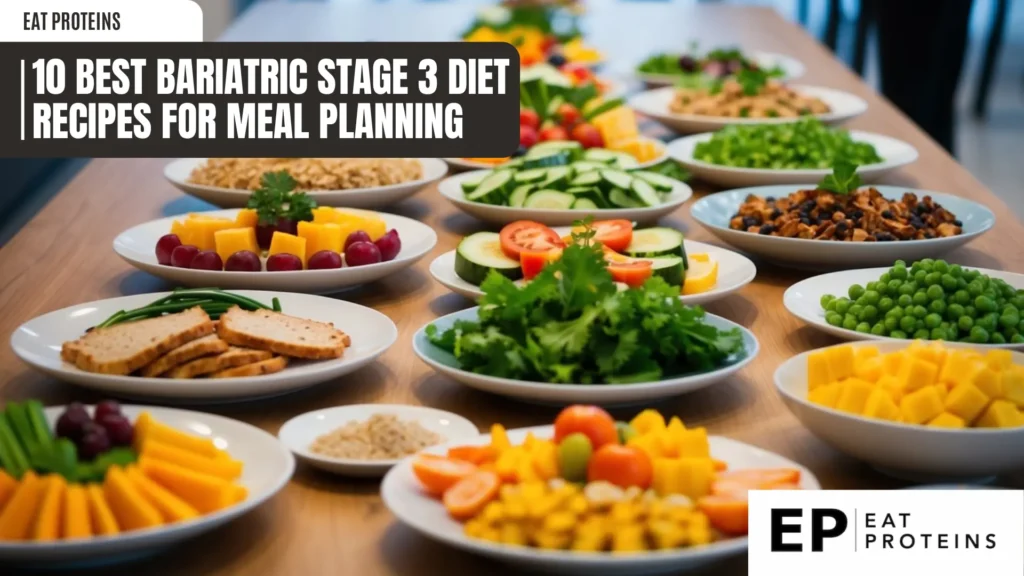
After bariatric surgery, it’s essential to follow a specific diet to support healing and help maintain weight loss. The Stage 3 diet allows for a variety of foods while focusing on nutrient-dense options. I will share the 10 best bariatric Stage 3 diet recipes that are both delicious and aligned with dietary needs.
These recipes are not just about being tasty; they also ensure that I meet my nutritional goals. Each dish is designed to provide balanced nutrition and promote a healthy lifestyle after surgery.
1. Greek Yogurt Parfait
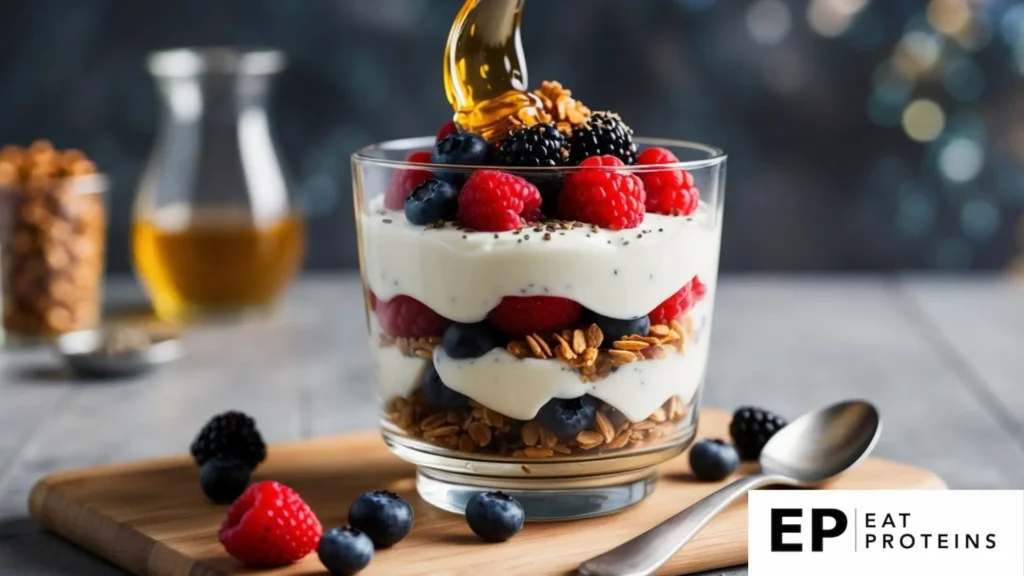
A Greek yogurt parfait is a simple and tasty recipe that fits well in a stage 3 bariatric diet. It combines yogurt, fruits, and a little crunch, making it both nutritious and satisfying.
To make this parfait, I gather the following ingredients: Greek yogurt, fresh berries, and a small amount of granola.
Making a Greek yogurt parfait is easy. Here are the steps:
- In a cup or bowl, add 1 cup of Greek yogurt.
- Layer in ½ cup of fresh berries, like strawberries or blueberries.
- Top with 2 tablespoons of granola for added texture.
This recipe is quick and can be prepared in just a few minutes. The creamy yogurt provides protein, while the berries add vitamins and flavor. The granola gives a nice crunch, but I use it sparingly to keep the sugar content low. Enjoying this parfait not only supports my health goals but also adds variety to my meals.
2. Grilled Chicken Breast
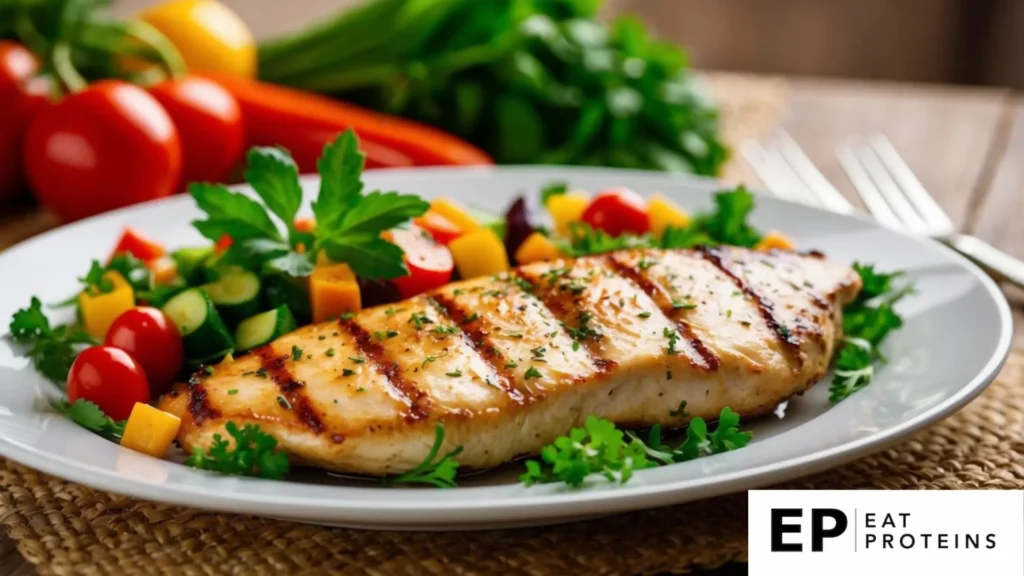
Grilled chicken breast is a healthy, lean protein choice for those on a bariatric stage 3 diet. It is simple to make and very satisfying.
To prepare grilled chicken breast, I start with boneless, skinless chicken breasts. They are easy to cook and absorb flavors well.
Here are the steps I follow:
- Preheat the grill to medium heat.
- Marinate the chicken in olive oil, lemon juice, and my favorite herbs for about 30 minutes.
- Season with salt and pepper before grilling.
- Cook the chicken for 6-7 minutes on each side, or until it reaches an internal temperature of 165°F.
I enjoy serving the chicken sliced over a bed of soft-cooked vegetables. This dish is nutritious, and I can easily prepare it for meal prep throughout the week. Plus, grilled chicken is versatile and can be paired with various sauces or sides to keep meals interesting.
3. Baked Salmon with Herbs
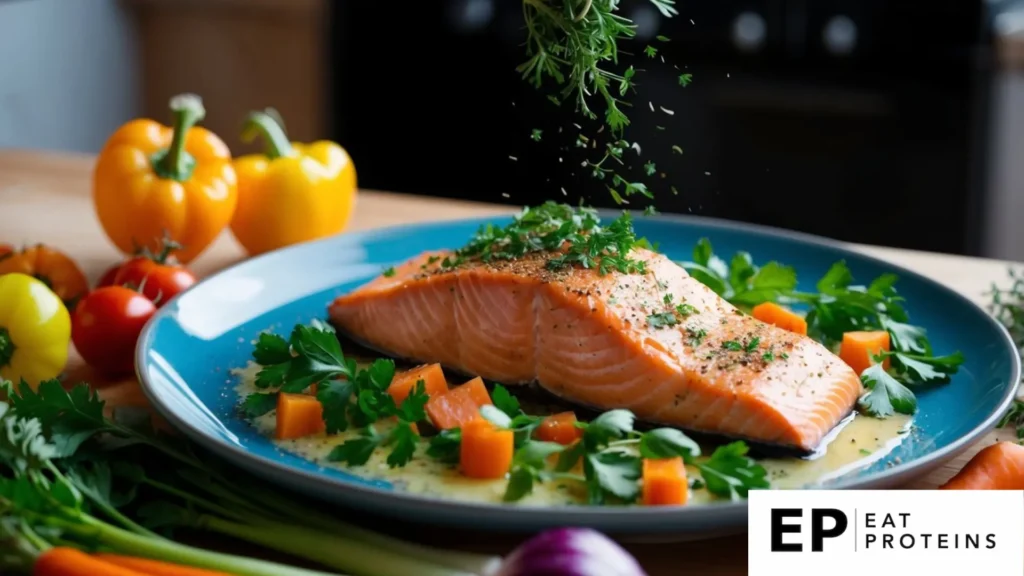
Baked salmon with herbs is a delicious option for a stage 3 bariatric diet. It is nutritious and easy to prepare. Salmon is rich in protein and healthy fats, making it a great choice.
To make this dish, I usually follow these simple steps. First, preheat the oven to 375°F (190°C). Then, I place the salmon fillet on a baking sheet lined with parchment paper.
Next, I drizzle a little olive oil over the fish. Then, I sprinkle fresh herbs like dill, parsley, or thyme on top. I also add a pinch of salt and pepper for flavor.
Once prepared, I bake the salmon for about 15-20 minutes. The fish is done when it flakes easily with a fork.
This recipe is perfect for my bariatric diet. It’s healthy and satisfying while remaining easy to make. Plus, I can enjoy it with soft-cooked vegetables for a complete meal.
4. Garlic Mashed Cauliflower
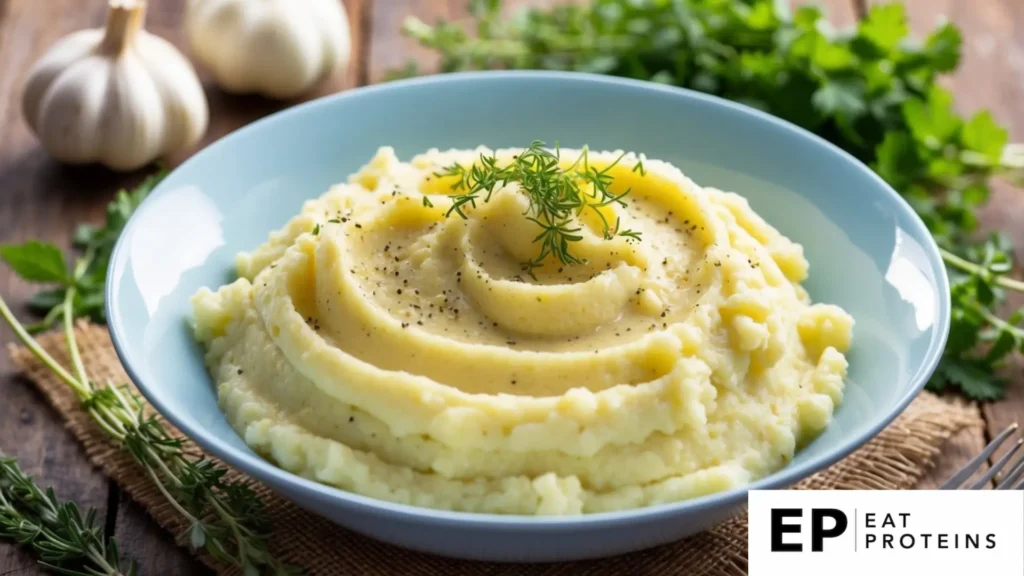
Garlic mashed cauliflower is a tasty alternative to traditional mashed potatoes. It’s creamy, flavorful, and fits perfectly into a bariatric stage 3 diet.
This recipe is simple to make. I find it easy to prepare with just a few ingredients. It took me about 20 minutes from start to finish.
To make garlic mashed cauliflower, follow these steps:
- Chop 1 head of cauliflower and steam it until tender, about 10 minutes.
- In a pan, heat 1 tablespoon of olive oil and add 2 minced garlic cloves. Cook until fragrant, about 1-2 minutes.
- Drain the cauliflower and add it to the pan with garlic.
- Mash the mixture with a fork or potato masher.
- For a creamier texture, mix in 2 tablespoons of low-fat cream cheese or Greek yogurt.
- Season with salt and pepper to taste.
I enjoy serving this dish warm as a side or as a main item with added protein. It’s satisfying and fits well within my meal plan.
5. Zucchini Noodles with Pesto
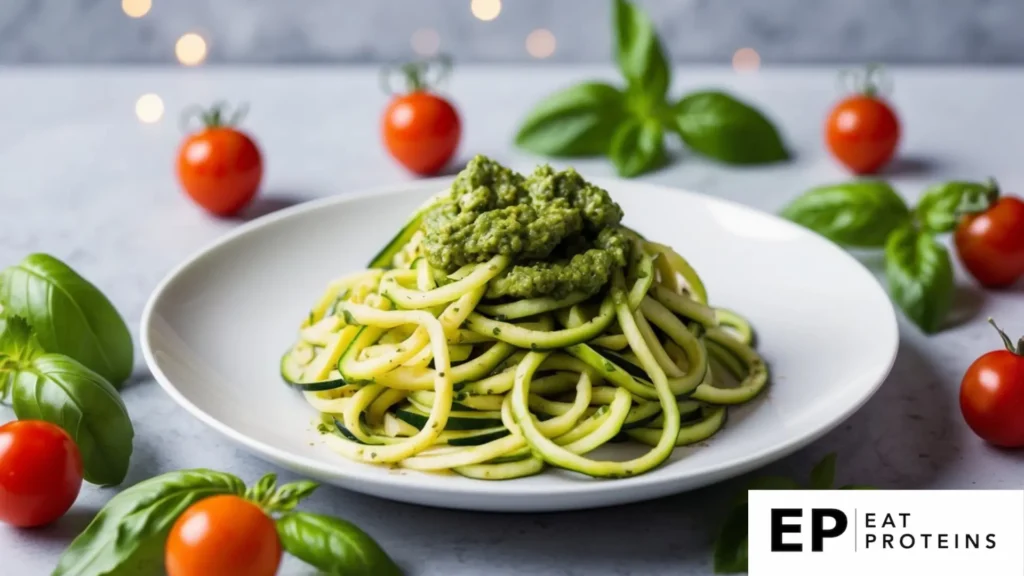
Zucchini noodles, also known as “zoodles,” are a healthy alternative to traditional pasta. They are low in calories and rich in vitamins. This dish is a great option for those on a bariatric stage 3 diet.
Making zucchini noodles is easy and quick. I simply use a spiralizer or a vegetable peeler to create long strands from fresh zucchinis. It takes only a few minutes to prepare.
To make this dish, I follow these steps:
- Prepare Zucchini: Wash 2 medium zucchinis. Spiralize or slice them thinly.
- Cook Noodles: In a pan, heat 1 tablespoon of olive oil over medium heat. Add the zucchini noodles and sauté for about 3-5 minutes until slightly tender.
- Make Pesto: In a blender, combine 1 cup of fresh basil, 1/4 cup of pine nuts, 1/4 cup of Parmesan cheese, 2 cloves of garlic, and 1/4 cup of olive oil. Blend until smooth.
- Combine: Once the noodles are ready, mix in the pesto. Stir until the noodles are lightly coated.
This dish is flavorful, satisfying, and perfect for my bariatric diet.
6. Chia Seed Pudding
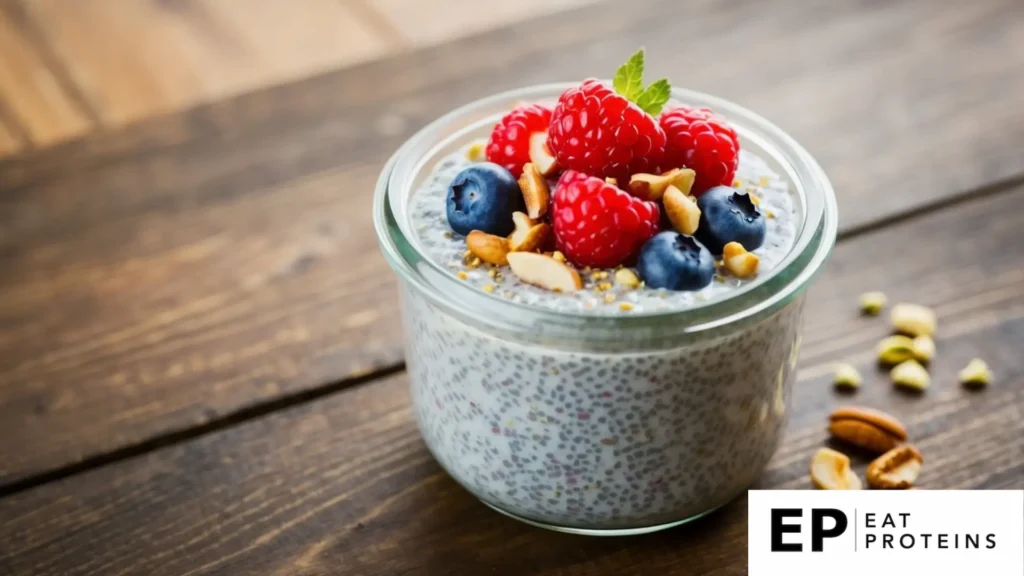
Chia seed pudding is a nutritious dish I enjoy, especially during the stage 3 bariatric diet. It is made by soaking chia seeds in liquid until they expand and create a thick, creamy texture.
Making chia seed pudding is very easy. I can prepare it in just a few minutes. The basic recipe typically uses only three ingredients: chia seeds, milk (dairy or non-dairy), and a sweetener if desired.
Here are the steps I follow:
- Combine 1/4 cup of chia seeds with 1 cup of milk in a bowl or jar.
- Stir well to combine the seeds and liquid, avoiding clumps.
- Add sweetener, such as honey or maple syrup, to taste (optional).
- Cover and refrigerate for at least 2 hours or overnight.
After chilling, I find the pudding thickened and ready to eat. I can enjoy it plain or add fruits, nuts, or spices for extra flavor. Chia seed pudding is rich in fiber and protein, making it an excellent option for my meal plan.
7. Quinoa and Black Bean Salad
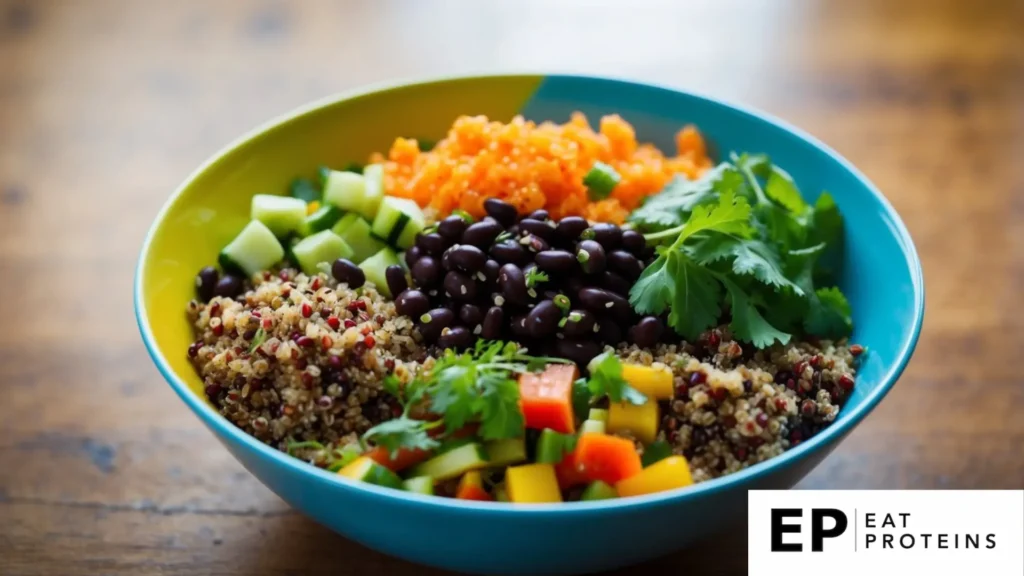
Quinoa and black bean salad is a nutritious and filling dish. Quinoa is a grain that is high in protein and fiber, while black beans add more protein and additional nutrients. This salad is perfect for those following a bariatric stage 3 diet.
Making this salad is easy and quick. I enjoy preparing it for a healthy meal or snack. Here’s how I make it:
- Ingredients: I gather 1 cup of cooked quinoa, 1 can of rinsed black beans, 1 diced bell pepper, 1 cup of corn, and ¼ cup of chopped cilantro.
- Mix: In a large bowl, I combine the quinoa, black beans, bell pepper, and corn.
- Dress: For dressing, I whisk together 2 tablespoons of olive oil, the juice of 1 lime, salt, and pepper to taste.
- Combine: I pour the dressing over the salad and toss everything together.
- Serve: This salad can be served chilled or at room temperature.
The result is a colorful and healthy salad that I can enjoy at any time. It’s also great for meal prep and stays fresh in the fridge for several days.
8. Stuffed Bell Peppers
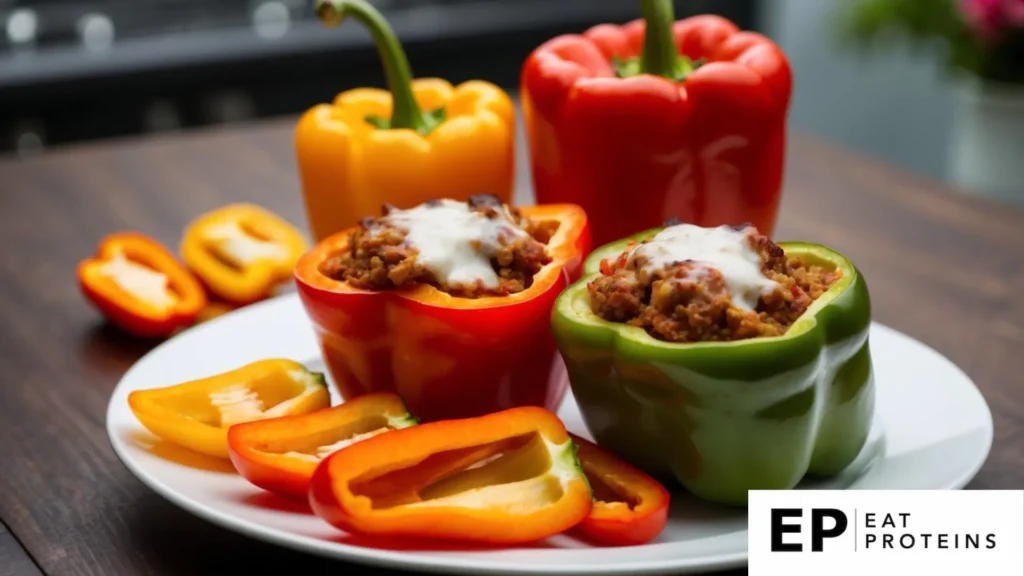
Stuffed bell peppers are a nutritious and tasty dish perfect for the stage 3 bariatric diet. They are easy to make and can be filled with a variety of healthy ingredients.
To prepare them, I start by preheating the oven to 375°F (190°C). Next, I choose fresh bell peppers, often red or yellow for added flavor and color.
I cut the tops off the peppers and remove the seeds. Then, I cook a filling, usually made of lean ground meat, quinoa, or brown rice, mixed with diced tomatoes, onions, and seasonings.
After the filling is ready, I stuff it into the peppers, pressing it down a bit. I place the stuffed peppers in a baking dish and pour a small amount of broth or sauce over them to keep them moist.
I bake the peppers for about 30 to 35 minutes until they are tender. This dish is not just easy to prepare, but it also supports a balanced diet after weight-loss surgery. Stuffed bell peppers can be a delightful addition to my meal plan.
9. Spaghetti Squash Marinara

Spaghetti squash is a nutritious, low-carb alternative to traditional pasta. It has a mild flavor and a unique texture that resembles spaghetti when cooked. This makes it an excellent choice for a bariatric stage 3 diet.
I find this recipe easy to make and very satisfying. Here are the steps to prepare Spaghetti Squash Marinara:
- Preheat your oven to 400°F (200°C).
- Cut the spaghetti squash in half lengthwise and scoop out the seeds.
- Drizzle each half with olive oil, and sprinkle with salt and pepper.
- Place the squash cut side down on a baking sheet.
- Bake for about 30-40 minutes, or until tender.
- While the squash is baking, prepare your marinara sauce.
- In a saucepan, heat olive oil and sauté garlic and onion until soft.
- Add canned tomatoes, basil, and any desired spices; simmer for 10-15 minutes.
- Once the squash is done, use a fork to scrape the flesh into strands.
- Combine the squash strands with the marinara sauce and serve warm.
This dish is easy to adapt with different vegetables or spices, making it a versatile choice for my meals.
10. Turkey Meatballs

Turkey meatballs are a delicious and healthy option for those on a bariatric stage 3 diet. They are high in protein and can be easily adapted to meet dietary needs.
Making turkey meatballs is quite simple. I prefer ground turkey for its lower fat content. These meatballs can be prepared in under 30 minutes.
Here’s how I make them:
- Preheat the oven to 375°F (190°C).
- In a bowl, mix 1 pound of ground turkey, 1/4 cup of breadcrumbs, 1 egg, 2 cloves of minced garlic, and my favorite spices.
- Shape the mixture into meatballs, about 1 inch in size.
- Place the meatballs on a baking sheet.
- Bake for 20-25 minutes, until they are cooked through and reach an internal temperature of 165°F (74°C).
These turkey meatballs are versatile. I can serve them with a light sauce or add them to a salad for added protein. Enjoying this dish helps me maintain my dietary goals while savoring great flavors.
What Is the Bariatric Stage 3 Diet?
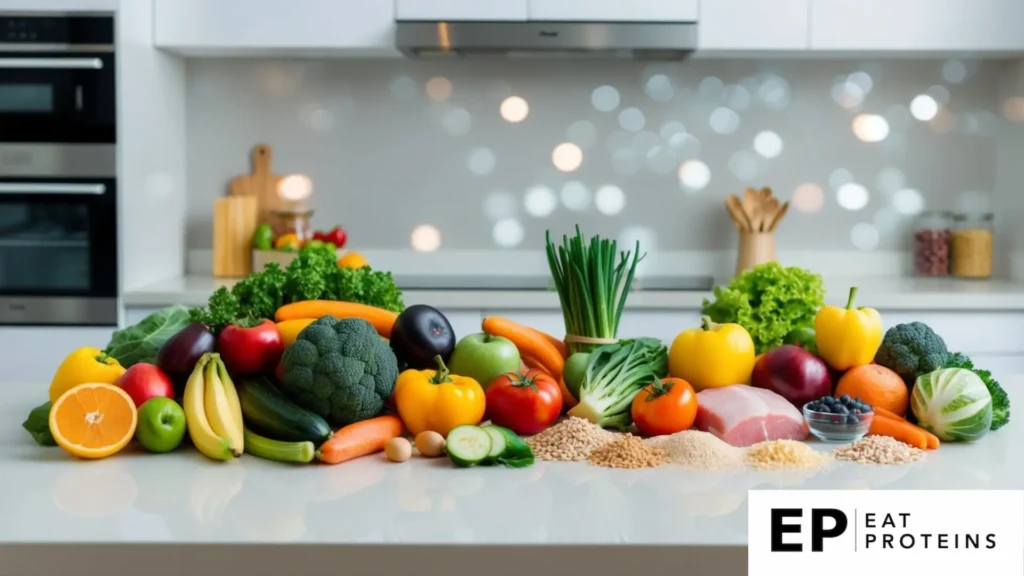
In this section, I will explain the purpose and benefits of the Bariatric Stage 3 diet. I will also cover the nutritional guidelines that are important for this stage after surgery.
What Are the Purpose and Benefits of the Bariatric Stage 3 Diet?
The Bariatric Stage 3 diet is designed for individuals who are transitioning from a liquid to a more solid food diet after weight loss surgery. At this stage, I focus on reintroducing a variety of foods while still promoting healthy eating habits.
The main goals of this diet include helping me maintain weight loss, getting used to new eating patterns, and preventing complications. Foods included in this phase are typically soft, easily digestible, and nutrient-dense. This helps promote adequate energy intake while avoiding high-calorie, low-nutrient foods. By following this stage properly, I can build a strong foundation for my long-term eating behaviors.
What Are the Nutritional Guidelines for the Bariatric Stage 3 Diet?
During the Bariatric Stage 3 diet, I follow specific nutritional guidelines to ensure that my body receives the necessary nutrients. Some key points include:
- Protein Focus: Aim for 60-80 grams of protein daily, incorporating sources like lean meats, eggs, and dairy.
- Hydration: Drink at least 64 ounces of water daily, avoiding carbonated drinks and sugary beverages.
- Portion Control: Use small plates to help manage portion sizes, typically 1/4 to 1/2 cup per meal.
- Meal Frequency: Eat three small meals and two snacks to keep my metabolism active.
Maintaining balanced nutrition during this stage is crucial for my continued progress. I prioritize foods rich in vitamins and minerals while minimizing added sugars and unhealthy fats.
What Are Essential Tips for Success on the Bariatric Stage 3 Diet?
When starting the bariatric stage 3 diet, I have found that meal planning and hydration are crucial for success. These strategies help me stick to my dietary goals and ensure I am meeting my nutritional needs.
What Are Some Meal Planning Strategies for the Bariatric Stage 3 Diet?
Meal planning plays a vital role in my success with the bariatric stage 3 diet. I create a weekly menu that includes a variety of foods to keep my meals interesting. This approach helps me avoid impulse eating and stick to my portion sizes.
I focus on balance and nutrition in my meal prep. I make sure to include proteins, healthy fats, and fiber. Some of my go-to options are lean meats, low-fat dairy, and plenty of vegetables. I also prepare snacks in advance, such as Greek yogurt or sliced fruits, which are easy to grab.
Using a simple checklist can help ensure I have everything I need for the week:
- Create a shopping list
- Plan meals around what I already have at home
- Include diverse ingredients to avoid boredom
Why Is Hydration Important on the Bariatric Stage 3 Diet?
Staying hydrated is another key element I focus on daily. After bariatric surgery, my body needs plenty of fluids to support digestion and overall health. I aim to drink at least 64 ounces of water each day.
To make this easier, I keep a refillable water bottle with me at all times. I also set reminders to drink throughout the day. Herbal teas and low-calorie drinks are my go-to options if I want something different.
I avoid drinking fluids during meals to prevent feeling too full. Instead, I wait 30 minutes after eating before having a drink. This helps me stay satisfied and boosts my hydration levels.
